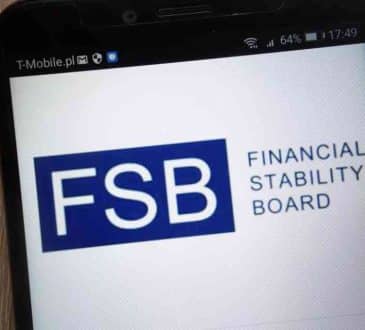Running a Successful Sales Meeting Remotely

Get on a plane, go meet the prospective client in person, make the pitch. Watch the signals in the room to see what is happening. Observe body language. Pre-2020, does this sound familiar? That was the year it all changed. Many of us thought we would be on pause for a few months, tops. But we’re still on pause and there is no end in sight.
At first, we simply moved our same process on to the conference call. Getting appointments on the calendar was the goal. And then we realized that a sales meeting with everyone on video camera wasn’t the same as a sales meeting where everyone is together in the room. The old content didn’t work with the same panache.
Virtual meetings are now our new standard and will be so for the foreseeable future, even when the pandemic has ended. So how do you adapt your sales meetings to make them more effective virtually?
Reworking Content for Virtual Meetings
Technology, better-informed buyers, and the Millennial generation have made many of the sales practices that have been employed for decades obsolete. Adaptation is the key to re-calibrating your presentation.
- If you rely on PowerPoint slides in your presentation, present no more than 15-20 during a 1-hour web meeting. It is likely your attendees have been on video conferences most of the workday and may be video fatigued. “Death by PowerPoint” is a meme and should be avoided. Evaluate each slide as to its value to the meeting and delete all non-essential slides. I use the “so what” test on every slide and bullet it. Each is meaningless unless tied to your value proposition. Brevity is supreme, especially in a virtual meeting. An agenda slide should be included and it must be validated with the attendees at the beginning of the meeting.
- Stories are effective, both theirs and yours. People like to talk about themselves and their company. This shouldn’t be discouraged in the interest of time. Your stories should include customer success stories and should be specifically chosen for each meeting, so that you don’t present any that are irrelevant to the buyer.
Assessing Engagement
It’s difficult to detect non-verbal signals that were once helpful in the live meeting room. But there are still ways to assess engagement.
- Ask probing questions to keep attendees’ attention. Encourage people to participate by occasionally stopping to ask thought-provoking, open-ended questions. These could be about their current goals or situation and their desired solution. If they still don’t speak up, keep asking questions. But be tactful; you don’t want to sound like an interrogator. Their responses will also help you better assess the buyer’s level of interest.
- When I am in a virtual meeting, I use what I call Steve’s presentation word meter. It’s a fictitious invention I created whose purpose is to count the words spoken by each person during a meeting. If the word meter indicates that the attendees speak more than 50 percent of all words during the meeting, it is likely successful. If the buyers speak less than 20 percent, then it is probably sub-optimal. Under 10 percent, it is probably a disaster! The attendees are just letting you speak, and are not participating in the meeting. Their mind was elsewhere and you didn’t recognize it.
- A mistake that I often see salespeople make is assuming that they need to fill empty spaces during the meeting with their words; in fact, the opposite is true. Be economical with your words during a web meeting and don’t try to “out talk” or talk over the buyer. Don’t try to fill the silence with chatter.
Moving Talk Forward
- It’s important throughout the meeting to solicit verbal assurances from the attendees to assure they understand your value proposition. Thinking that they are following or understanding you isn’t enough. They may believe they are being polite by not saying they are confused (or maybe just embarrassed). Rather than ask “does everybody understand what I am explaining?’ – in which case few people are likely to say “no, I do not” – put it on yourself instead by asking “Have I made myself clear?” Then, if they don’t understand what you have explained, they will more readily answer “no,” and you can try harder to provide a better explanation.
- Reinforce the important takeaways that are presented or obtained through questioning and conversation at the conclusion of the meeting. Repetition increases retention. What five things do you want them to remember from this meeting?
- Allow sufficient time at the end of the meeting to ask closing questions and define the next steps. I have seen many meetings run over the allotted time and then everybody leaves the meeting, or shuts off the videoconference, without important questions being asked, such as “Did the meeting meet your expectations today? If not, why not?” and “Are there any reasons why you could not purchase our product or service?” It is more important to do this than completing the PowerPoint deck or even demonstrating a few more features. Bonus: there are no planes that you need to catch.
Virtual selling, rather than meeting in-person, has become the new norm. We all need to be continuously growing and adapting to new technology and new circumstances to thrive in the marketplace.
Written by Steve Weinberg.
Have you read?
Best Business Schools In The World For 2022.
Best Fashion Schools In The World For 2022.
Best Hospitality And Hotel Management Schools In The World For 2022.
Best Medical Schools In The World For 2022.
The World’s Best Universities For Doctor of Business Administration (DBA), 2022.
Add CEOWORLD magazine to your Google News feed.
Follow CEOWORLD magazine headlines on: Google News, LinkedIn, Twitter, and Facebook.
Copyright 2024 The CEOWORLD magazine. All rights reserved. This material (and any extract from it) must not be copied, redistributed or placed on any website, without CEOWORLD magazine' prior written consent. For media queries, please contact: info@ceoworld.biz








